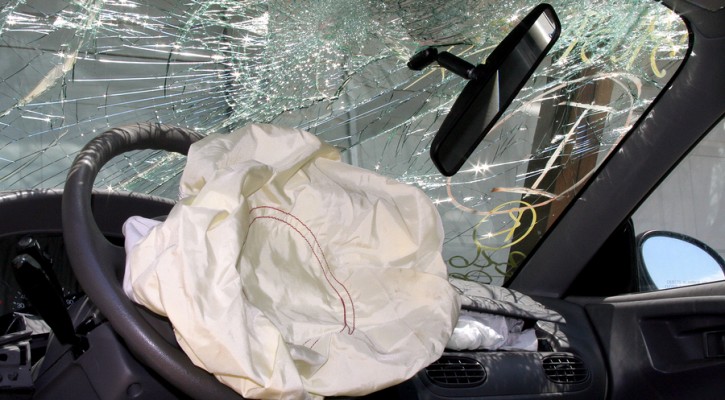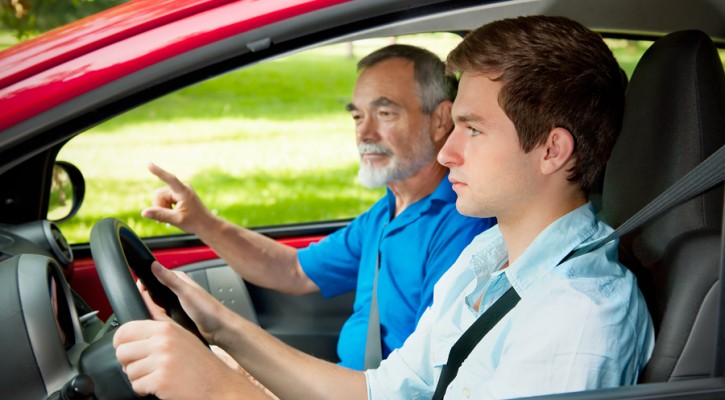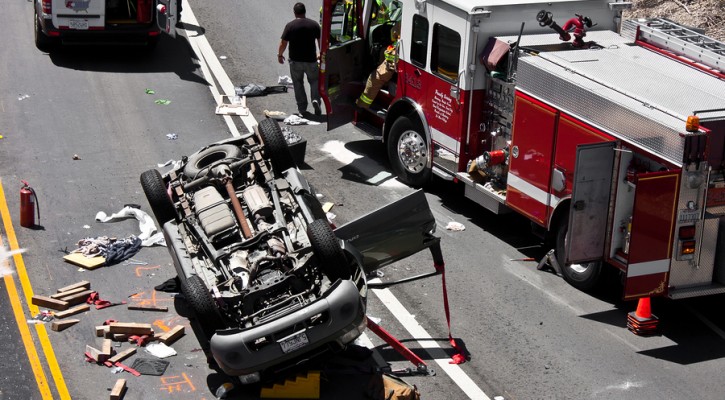Tag Archive: Teen driving safety

When Teen Crashes Hit Close To Home
October 30, 2014
I’ve been writing articles on teen crashes and teen driving safety for years and, quite frankly, it’s becoming more and more difficult to come up with something new and fresh when the teens keep killing themselves the same way month after month.
Last week the issue hit close to home when one of my Grandson’s close friends was killed in a car crash. The details were sketchy because the crash is still being investigated but, according to the newspaper account, he applied his brakes when another vehicle entered the road, the passenger side wheels left the roadway and it appears he over-corrected. His vehicle flipped approximately four or five times and, because he wasn’t wearing a seat belt, he was ejected from the vehicle. He was taken to a nearby hospital where he was pronounced dead.
His passengers who were wearing seat belts weren’t seriously injured and were cleared at the scene.
In August, in the “Ask the Driving School Instructor” column, I answered a question on the most common type of car crash experienced by teens. In that column I wrote that the most common type of fatal teen crashes, according to all the news reports I read, involved teen drivers who:
- were either distracted, speeding, or both;
- veered off the road;
- over-corrected, sending their vehicle into a spin or tumbling over; and
- weren’t wearing a seat belt.
The tragic thing about this and all the other crashes that kill more than five teen drivers a day is that they were so easily preventable.
Teens need to be taught how to safely recover if their vehicle leaves the side of the road. The natural instinct is to jerk the steering wheel back toward the roadway (over-correct) but, at high speeds, that can cause the vehicle to spin out or flip over. If young drivers find themselves in that position, they should be taught not to give into that natural instinct to jerk the wheel back toward the road. Instead, they should grip the wheel, watch where they’re going and slow the vehicle down. After slowing to a safe speed and checking that the roadway is clear, they can then turn the wheel to reenter the road.
Most important of all, teens need to learn the importance of wearing a seat belt. Among the 16 to 20 year old age group, 55 percent of the vehicle occupants who were killed in teen crashes in 2012 weren’t wearing a seat belt. No matter how bad the crash may be, you’re always better off and have a far greater chance of surviving a crash if you’re properly buckled into your seat belt and shoulder harness. Had he been wearing his seat belt, he may have walked away from the crash with his friends. If this young man’s grieving friends take anything else away from this crash, hopefully they will learn to always wear a seat belt.
There’s no such thing as a car accident! Accidents are something we have no control over. Car crashes happen when one or more drivers make a bad choice that leads to tragic consequences. Even if you can’t avoid a crash, you can still make the right choices to survive it.

Teen Drivers Face Many Dangers; Parental Involvement Key To Safe Driving
May 6, 2014
The statistics don’t look good for teen drivers and parental involvement to reduce the rate of teen crashes is more important than ever. Teens are involved in more crashes per mile driven than any other age group and are involved in seven times as many crashes per mile driven than drivers in their 40’s, 50’s, or 60’s. With prom and graduation season approaching, New Canaan CT Police Chief, Leon Krolikowski, writes about the dangers faced by teen drivers and the need for parental involvement to keep teen drivers safe behind the wheel. Read more: Good time of year to remind teens why it’s worth driving safely
Ford Driving Clinics Coming to Schools
March 22, 2011
Ford’s Driving Skills for Life, a group focused on teen driving safety will be going around schools to set up driving clinics for teens. Ford DSFL is focused on correcting the most common teen driving mistakes which are; speeding, spacing, vehicle handling, and distractions.
They teach these in their Ford driving clinics through 3 different exercises for teens. The goal is for the teens to experience first-hand how the lack of training or knowledge may lead to disaster down the line. The three exercises are:
- Vehicle handling – In this one, the rear wheels of the car are intentionally loose, causing the vehicle to skid when approaching turns. The goal of this exercise is to teach teens what to do in situations like that.
- Distracted Driving Course – The goal of this is to show that the inside of a vehicle is full of distractions — and ways on how to deal with them while staying focused on driving.
- Impaired Driving Course – Students will be wearing “fatal vision” goggles that impair vision, to show that drivers are not truly able to operate a vehicle under the influence.
The Ford DSFL tour is a 30-city, 15-state driving clinic to be held in high schools. For a full listing of schedules, check out their Ford DSFL Site.
Photo Courtesy of: Ford Driving Skills for Life

5 Teen Driving Safety Tips
January 11, 2011
Tomes can be written about teen driving safety tips but some of the more important ones, are usually the ones that are both the most simple and sometimes-overlooked. Most people know that drinking while driving is never a good idea, regardless of if it is a new driver, or older driver. But there are several other reminders to pass on to family and friends.
Here are a few of the better teen driving safety tips:
Contracts with parents – This is by far the simplest and easiest to do to keep teens safe: maintain a Parent-Teen driving contract or logbook. It could be as simple as a set of dos and don’ts from parents to their teens; along with the appropriate consequences should the teen break any of the terms of agreement. A logbook is helpful to limit access to the vehicle and monitor your teens use and responsibility toward driving and care. Studies show that when teens are not given unlimited access to the vehicle, that they take better care of it and are involved in fewer crashes and receive les tickets. The logbook can be as simple as a teen noting down the times of departure and arrival if the vehicle will be used.
Don’t be a chauffeur – A teen driving safety tip is for teens not to become their friend’s personal driver. Just because a teen is able to drive does not mean they are capable of handling the distraction and responsibility for their passengers. Many states have enacted laws prohibiting learner’s permit holders from having passengers under 21, and for newly licensed drivers limiting passengers as well. More passengers equate to more variables to lose focus on while driving.
Learn from defensive driving, not by driving around – Driver’s education and defensive driving courses are specifically designed to create a controlled environment for new drivers to hone their skills and learn strategies for safe driving. Busy streets are not for learning defensive driving on the fly.
Buckle up! – Teach a teen driver to practice buckling up before even starting the vehicle. Wearing your safety belt reduces your chances of being killed or injured by up to 50 percent. As the driver, it keeps you at wheel and in control of the vehicle, which can help you react to other compounding situations in a crash. For a passenger buckling up reduces their body of being thrown from the vehicle, crashing into the interior of the vehicle or other occupants, and reduces the damage caused internally by the force to their organs. Making a constant habit of buckling up before turning on the ignition will go a long way to ensuring their safety and avoiding a citation.
Distracted Driving Mobile App – Most distracted driving mobile applications are designed to disable a mobile phone’s features while the phone is moving. This is a great way to avoid the temptation to answer the phone or a text while behind the wheel. Another feature for many of these apps is to designate locations through their Global Positioning System (GPS) that are unsafe allowing parents to be notified, should their teen find themselves in those spots.
Vehicle crashes are the number one cause of deaths for teens, make it a priority to raise vehicle safety awareness.

Teens Are Not Immune to Death or Injury
December 20, 2006
In Mandeville, Louisiana, law enforcement and school officials alike are trying to spread the word about safe teenage driving. A forum on teen driving, titled “Teen Focus on Safe Driving: The Myth of the Invincible Teen,” was sponsored by the St. Tammany Parish School Board. The purpose of the forum was to show teens that they are not immune to being killed or seriously injured in a car crash, something that has unfortunately been proven lately by local teen drivers.
At the forum, teams gathered to learn from law enforcement officers, and medical and other driver education professionals. Presenters also showed a national award-winning video that warned teen drivers again of the risks they take every time they get behind the wheel. Not only are they putting themselves at risk when getting involved with poor choices and behavior, but they are putting others at risk as well.
Drinking and driving and not wearing seat belts were two of the most common risky behaviors addressed at the forum. An Associate Professor of Emergency Medicine at Louisiana State University, Dr. Todd Thoma, stated that almost 40 percent of auto fatalities are due to drinking and driving. And while new seatbelt laws have saved hundreds of thousands of lives, many more people still do not wear them.
The teams, which comprised of a school administrator, two school teachers or counselors, one parent and more than 10 students, gathered in groups after the presentations to brainstorm ideas on sharing what they learned to the rest of their classmates. Ideas such as staging mock accidents and how they could have been avoided by following the rules of the road and holding safe teen driving pep rallies were mentioned.
This forum showed teenagers that they need to be responsible when driving, and be aware of the safety issues and dangers involved. Teens can’t rely on parents and law enforcement officials alone to keep them safe – we need to remember that we are the ones behind the wheel, making the decisions. Hopefully this forum will have showed enough teens how to make the proper decisions, ones that just may save their lives.
